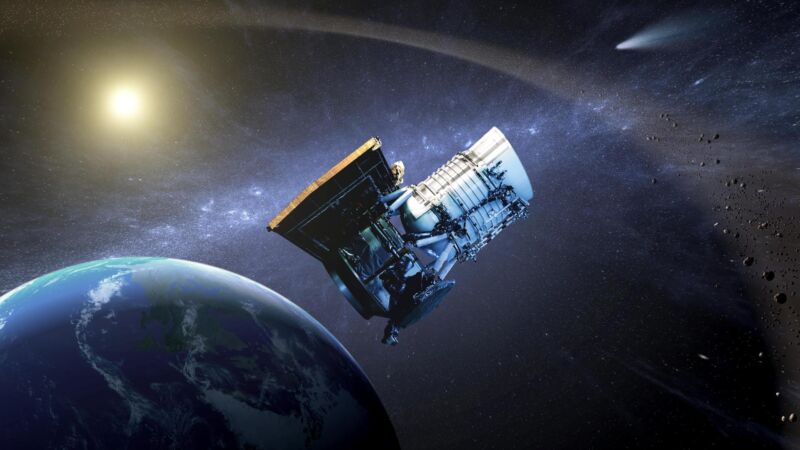NASA shuts down asteroid-hunting telescope, but a better one is on the way

Enlarge / Artist's illustration of NASA's Wide-field Infrared Survey Explorer spacecraft. (credit: NASA/JPL-Caltech)
Last week, NASA decommissioned a nearly 15-year-old spacecraft that discovered 400 near-Earth asteroids and comets, closing an important chapter in the agency's planetary defense program.
From its position in low-Earth orbit, the spacecraft's infrared telescope scanned the entire sky 23 times and captured millions of images, initially searching for infrared emissions from galaxies, stars, and asteroids before focusing solely on objects within the Solar System.
Wising up to NEOsThe Wide-field Infrared Survey Explorer (WISE) spacecraft launched in December 2009 on a mission originally designed to last seven months. After WISE completed checkouts and ended its primary all-sky astronomical survey, NASA put the spacecraft into hibernation in 2011 after its supply of frozen hydrogen coolant ran out, reducing the sensitivity of its infrared detectors. But astronomers saw that the telescope could still detect objects closer to Earth, and NASA reactivated the mission in 2013 for another decade of observations.